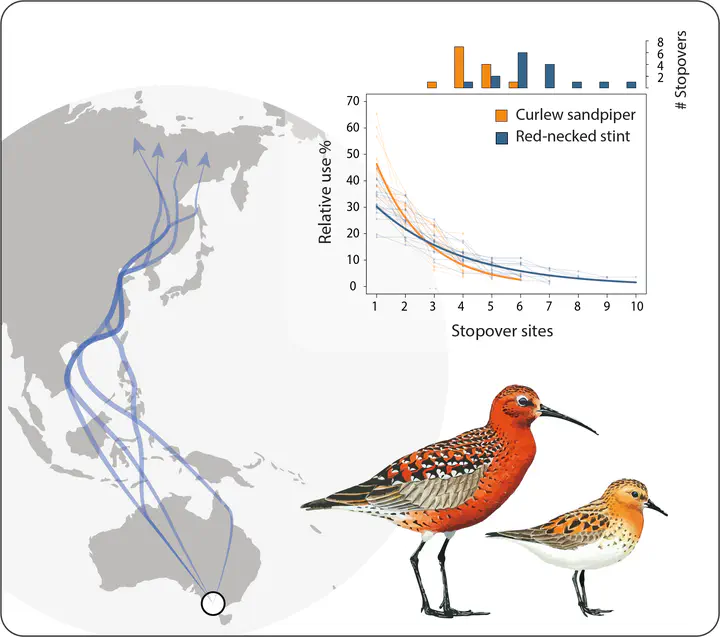Migration strategy as an indicator of resilience to change in two shorebird species with contrasting population trajectories

Abstract
Many migratory birds are declining worldwide. In line with the general causes for the global biodiversity crisis, habitat loss, pollution, hunting, over-exploitation and climate change are thought to be at the basis of these population declines. Long-distance migrants seem especially vulnerable to rapid anthropogenic change, yet, the rate of decline across populations and species varies greatly within flyways. We hypothesize that differences in migration strategy, and notably stopover-site use, may be at the basis of these variations in resilience to global change. By identifying and comparing the migration strategies of two very closely related shorebird species, the Curlew sandpiper Calidris ferruginea and the Red-necked stint Calidris ruficollis, migrating from the same non-breeding site in Australia to similar breeding sites in the high Russian Arctic, we aimed to explain why these two species express differential resilience to rapid changes within their flyway resulting in different population trajectories in recent times. Based on 13 Curlew sandpiper and 16 Red-necked stint tracks from light-level geolocator tags, we found that individual Curlew sandpipers make use of fewer stopover areas along the flyway compared to Red-necked stints. Furthermore, and notably during northward migration, Curlew sandpipers have a higher dependency on fewer sites, both in terms of the percentage of individuals visiting key stopover sites and the relative time spent at those sites. While Curlew sandpipers rely mainly on the Yellow Sea region, which has recently experienced a sharp decline in suitable habitat, Red-necked stints make use of additional sites and spread their relative time en-route across sites more evenly. Our results indicate that differential migration strategies may explain why Curlew sandpipers within the East Asian-Australasian Flyway are declining rapidly (9.5%–5.5% per year) while Red-necked stints remain relatively stable (−3.1%–0%). We consider that more generally, the number of sites per individual and among a population, the spatial distribution across the flyway, as well as the relationship between the time spent over sites may prove to be key variables explaining populations and species’ differential resilience to environmental change.